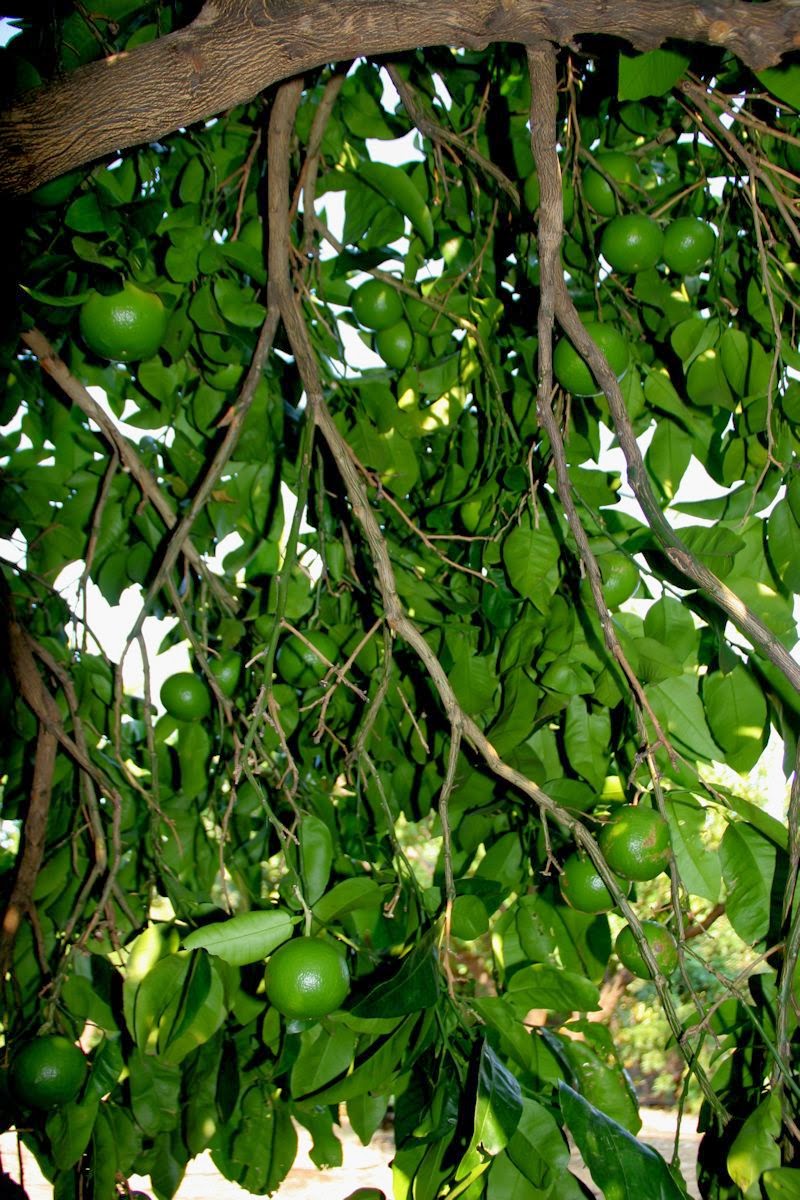 |
| A well pruned citrus tree has open space inside |
- It maintains the tree at a manageable size. Left unpruned a citrus tree will continue growing higher and wider each year until eventually reaching 20' or more. It is common to see unpruned citrus trees hanging over neighbors' fences and rubbing on roofs. Even dwarf citrus will easily grow too tall, they just take a bit longer.
- Pruning allows light and air inside the canopy, improving fruit quality and quantity and reducing pest infestations. Left unpruned the foliage becomes so dense that deeply shaded areas stop bearing and small branches die back. Mites and scale insects thrive in the dark crowded spots that tend to stay damp. A well pruned tree is a healthy tree.
- Pruning makes harvest much easier. Over time small dead twiggy branches accumulate, making picking difficult and painful. Cutting out the dead and thinning the crowded shoots really improves access and visibility. I like to maintain big enough openings around the canopy that I can step inside.
- Keeping branches up off the soil prevents fruit mold and limits access for ants and other pests.
 |
| Dead shoots clutter up a grapefruit tree |
 |
| The same view after pruning out dead wood and crowded branches |
 |
| Before pruning . . . |
 |
| . . . and after |
 |
| Vigorous upright shoots called "water sprouts" should always be removed. Left alone they quickly grow right through the top of the tree and they seldom produce decent fruit if any. |
 |
| Water sprouts can be recognized by their flattish shape and are often thorny |
 |
| These naval orange trees maintained at no more than 7' high can be picked without a ladder. Lower branches are pruned up off the ground so the lowest fruit will not touch moist soil and get moldy. |
 |
| The view from inside shows the open spaces created by pruning. These oranges can be picked without getting scratched hands. |
When to prune
Heavy pruning on a neglected citrus tree is best done in the late winter/early spring before the spring growth spurt. Then strong spring growth will nurture the tree to recovery. If topping the tree to reduce its height exposes bare bark to the sun, be sure to paint those areas with 50/50 white interior latex paint and water to prevent sunburn.
But for trees that are regularly maintained, pruning time is not so important since little growth is removed each time. I normally do touch-up prunings twice a year, in late winter and again in mid summer as needed to control height. Since pruning promotes new growth, late summer pruning should be avoided since the new growth could still be tender in early winter and easily freeze damaged.

Thanks for such an informative article! I really liked the bit on the citrus tree. Tree Service Brooklyn NY
ReplyDelete